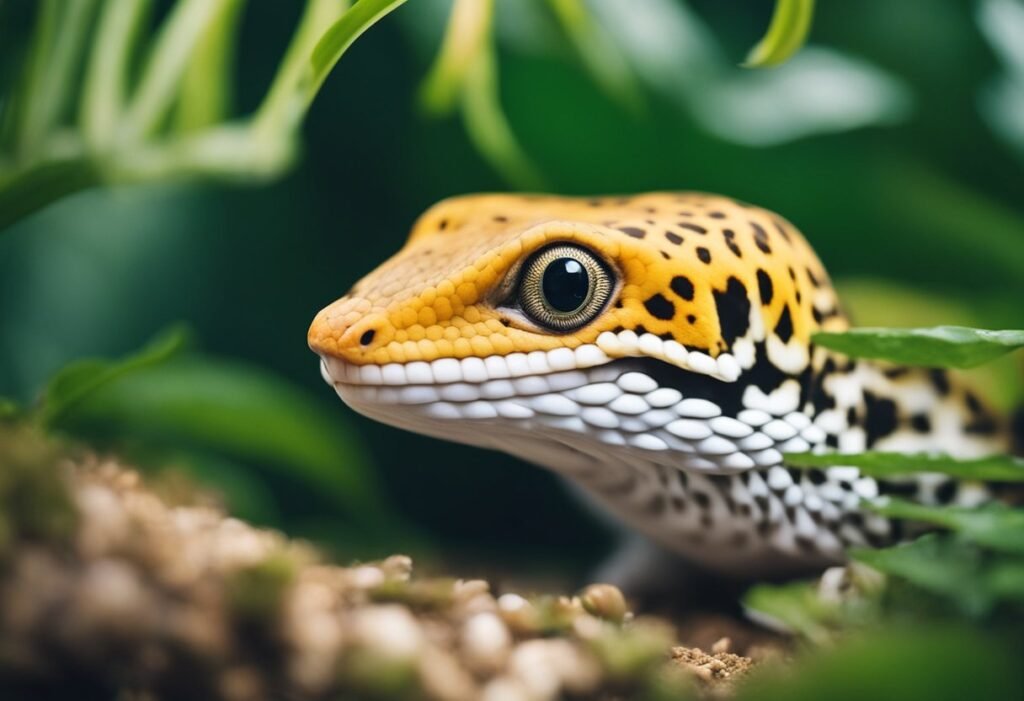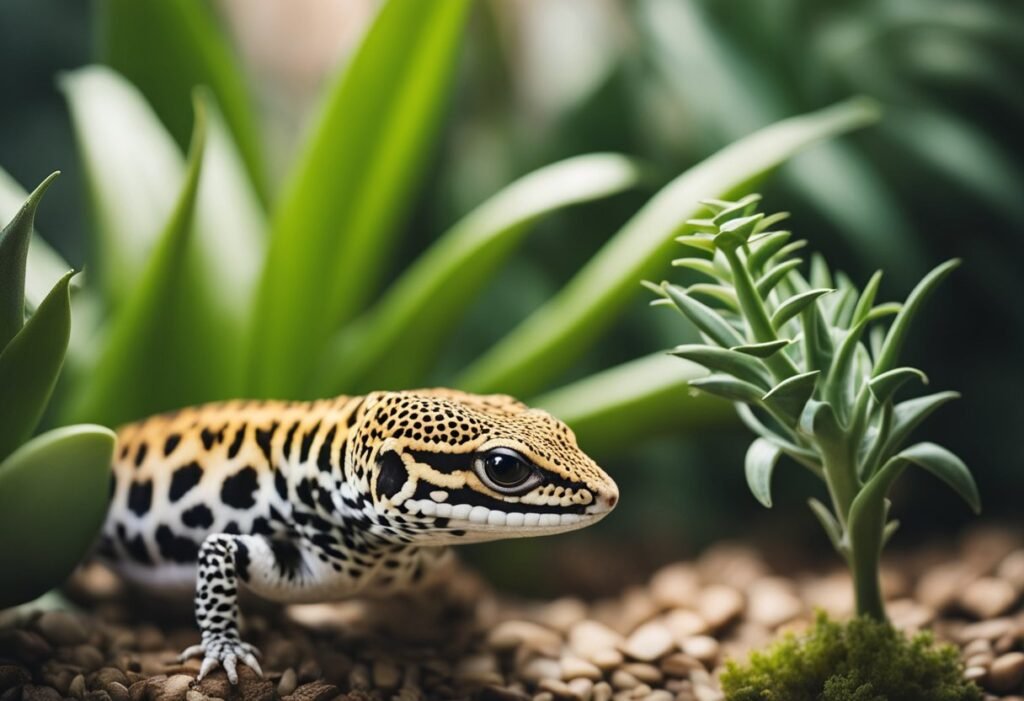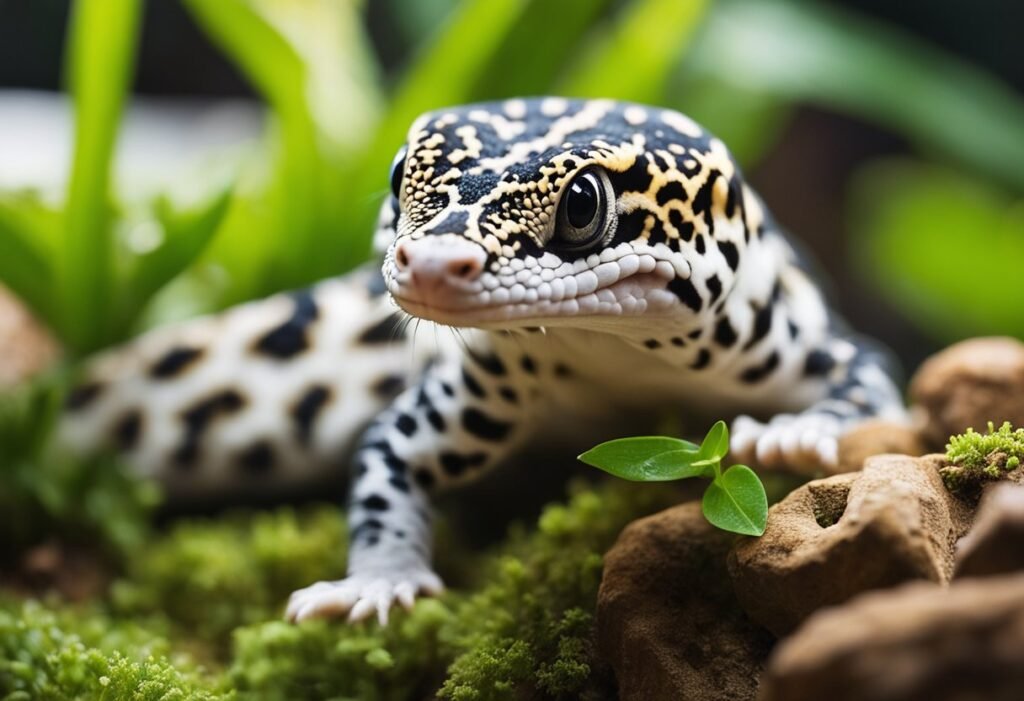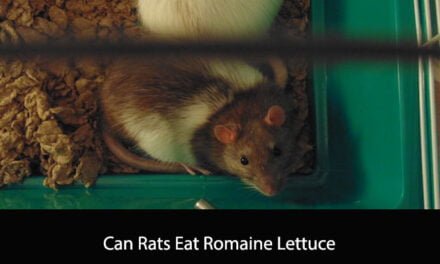Leopard geckos are fascinating creatures that make great pets. As with any pet, it is important to provide them with a balanced diet that meets their nutritional needs. While it is common knowledge that leopard geckos primarily eat insects, some pet owners may wonder if it is safe to feed them live plants.

The short answer is yes, leopard geckos can eat live plants. However, it is important to note that live plants should not be the main source of their diet. Leopard geckos are primarily insectivores and require a diet high in protein. Live plants can be used as a supplement to their diet, providing additional nutrients and fiber. It is important to choose the right plants, as some may be toxic to leopard geckos or difficult for them to digest.
Leopard Gecko Dietary Basics
As leopard geckos are primarily insectivores, their diet should consist mostly of live insects such as crickets, mealworms, and dubia roaches. It is important to feed them a variety of insects to ensure they receive all the necessary nutrients.
In addition to insects, some leopard geckos may enjoy small amounts of fruits and vegetables. However, it is important to note that live plants are not a necessary part of their diet and may even be harmful if they are toxic or difficult to digest.
It is also important to dust their food with calcium and vitamin D3 supplements to prevent metabolic bone disease. We recommend using a calcium supplement without vitamin D3 at every feeding and a calcium supplement with vitamin D3 once or twice a week.
Overall, a varied diet of live insects and occasional fruits and vegetables, along with calcium and vitamin D3 supplements, will help ensure your leopard gecko stays healthy and happy.
The Role of Live Plants in a Leopard Gecko Habitat
Live plants can play a beneficial role in a leopard gecko’s habitat. In this section, we will explore the benefits of live plants as well as potential risks and concerns.
Benefits of Live Plants
Live plants can provide several benefits to a leopard gecko’s habitat. Firstly, they can help maintain humidity levels in the enclosure. This is important as leopard geckos require a certain level of humidity for shedding and overall health. Live plants can also provide a natural hiding place for the gecko, reducing stress and promoting natural behaviors.
In addition, live plants can improve the aesthetic of the enclosure, making it more visually appealing. They can also help purify the air and remove harmful toxins, creating a healthier environment for the gecko.
Potential Risks and Concerns
While live plants can provide benefits, there are also potential risks and concerns to consider. One concern is the risk of the gecko eating the plant. While some plants are safe for leopard geckos to consume, others can be toxic and cause harm to the gecko. It is important to research and carefully choose non-toxic plants for the enclosure.
Another concern is the risk of the plant harboring harmful bacteria or parasites. This can be mitigated by thoroughly cleaning and inspecting the plant before introducing it to the enclosure.
In conclusion, live plants can provide several benefits to a leopard gecko’s habitat, but it is important to carefully choose non-toxic plants and mitigate potential risks.
Types of Live Plants Safe for Leopard Geckos

When it comes to feeding leopard geckos live plants, it is important to choose the right ones that are safe for them to consume. Here are some types of live plants that are safe for leopard geckos:
1. Succulents
Succulents are a great choice for leopard geckos because they are easy to care for and safe for them to eat. Some popular types of succulents that leopard geckos can eat include aloe vera, hens and chicks, and jade plant.
2. Edible Flowers
Edible flowers are not only safe for leopard geckos to eat, but they also add some color to their diet. Some popular edible flowers that leopard geckos can eat include pansies, dandelions, and marigolds.
3. Leafy Greens
Leafy greens are a great source of nutrition for leopard geckos and are safe for them to eat. Some popular leafy greens that leopard geckos can eat include collard greens, kale, and dandelion greens.
4. Herbs
Herbs are not only safe for leopard geckos to eat, but they also provide some health benefits. Some popular herbs that leopard geckos can eat include basil, parsley, and oregano.
It is important to note that not all live plants are safe for leopard geckos to eat. Some plants can be toxic to them and should be avoided. Always research a plant before feeding it to your leopard gecko and consult with a veterinarian if you are unsure about its safety.
Feeding Practices for Leopard Geckos
Leopard geckos are insectivores, which means they require a diet high in protein. In the wild, leopard geckos primarily feed on insects, but in captivity, they can also be fed live prey and commercial diets. However, it is important to note that leopard geckos cannot eat live plants.
Appropriate Live Prey
Leopard geckos should be fed live prey that is appropriate for their size. Some appropriate live prey options include crickets, mealworms, superworms, and dubia roaches. It is important to offer a variety of prey to ensure that your leopard gecko is receiving a balanced diet.
When feeding live prey, it is important to ensure that the prey is gut-loaded, meaning that the prey has been fed a nutritious diet before being fed to your leopard gecko. This ensures that your leopard gecko is receiving the proper nutrition.
Supplementation and Nutrition
In addition to live prey, it is important to supplement your leopard gecko’s diet with calcium and vitamin D3. Calcium is important for proper bone growth and development, while vitamin D3 helps with calcium absorption.
Leopard geckos can be dusted with calcium powder before being fed to ensure that they are receiving the proper amount of calcium. It is important not to over-supplement with vitamin D3, as this can lead to health problems.
Overall, it is important to provide your leopard gecko with a balanced diet that includes appropriate live prey and proper supplementation. By following these feeding practices, you can ensure that your leopard gecko is healthy and thriving.
Creating a Leopard Gecko-Friendly Terrarium
When it comes to setting up a terrarium for your leopard gecko, it’s important to create an environment that is both comfortable and safe for them. One aspect to consider is the use of live plants in the terrarium. Here’s what you need to know about creating a leopard gecko-friendly terrarium with live plants.
Substrate Selection
Before adding live plants to your leopard gecko’s terrarium, it’s important to choose the right substrate. We recommend using a substrate that is safe for both your gecko and the plants. Some options include coconut coir, organic topsoil, and sand mixed with clay. Avoid using substrates that contain chemicals or fertilizers as they can be harmful to your gecko and the plants.
Plant Placement
When it comes to placing live plants in your leopard gecko’s terrarium, it’s important to choose plants that are safe for them to eat. Some safe options include spider plants, pothos, and succulents. We recommend placing the plants in a way that allows your gecko to access them but also provides hiding spots and climbing opportunities. Use rocks, logs, and other decorations to create a natural-looking environment.
Terrarium Maintenance
Maintaining a leopard gecko-friendly terrarium with live plants requires some effort. It’s important to regularly check the plants for signs of damage or disease and remove any dead leaves or debris. We recommend using a misting system to keep the plants hydrated and the humidity levels optimal for your gecko. Additionally, make sure to clean the substrate and decorations regularly to prevent the buildup of bacteria or mold.
In conclusion, adding live plants to your leopard gecko’s terrarium can provide numerous benefits, including improved air quality and a more natural environment. However, it’s important to choose the right substrate, plant safe options, and maintain the terrarium properly to ensure the health and wellbeing of your gecko.
Monitoring Your Leopard Gecko’s Health

As responsible pet owners, it is important that we monitor our leopard geckos’ health regularly. This includes observing their behavior, physical appearance, and eating habits. Here are some things to keep in mind when monitoring your leopard gecko’s health:
Behavior
Leopard geckos are generally docile and solitary creatures. If your gecko suddenly becomes aggressive or starts hiding excessively, it may be a sign that something is wrong. Additionally, if your gecko is lethargic or not moving around much, it could be a sign of illness.
Physical Appearance
Leopard geckos should have clear eyes, a healthy weight, and a shiny, smooth coat. If you notice any abnormalities such as bumps, lumps, or discoloration, it is important to seek veterinary attention. Additionally, make sure to check for any signs of shedding problems, such as retained shed or stuck shed.
Eating Habits
Leopard geckos are carnivorous and should be fed a diet of live insects. If your gecko stops eating or appears to be losing weight, it may be a sign of illness. Additionally, make sure to provide a shallow dish of fresh water at all times and monitor your gecko’s hydration levels.
By regularly monitoring your leopard gecko’s behavior, physical appearance, and eating habits, you can catch any potential health issues early on and ensure your gecko stays happy and healthy.
Common Misconceptions About Leopard Geckos and Plants
There are several misconceptions about leopard geckos and their ability to eat live plants. In this section, we will clarify some of these misconceptions.
Misconception 1: Leopard geckos can survive solely on plants
Leopard geckos are primarily carnivorous and require a diet that is high in protein. While they may nibble on live plants occasionally, they cannot survive solely on a plant-based diet. In fact, feeding them a diet that is too high in plants can lead to nutritional deficiencies and health problems.
Misconception 2: All plants are safe for leopard geckos to eat
While some plants are safe for leopard geckos to eat, not all plants are suitable for their diet. Some plants can be toxic to leopard geckos and can cause serious health problems or even death. It is important to research the specific plants you plan to feed your leopard gecko and ensure they are safe for consumption.
Misconception 3: Leopard geckos do not need any plants in their diet
While leopard geckos do not require plants in their diet, adding some live plants to their enclosure can provide several benefits. Live plants can help improve air quality, regulate humidity levels, and provide hiding spots for your gecko. However, it is important to ensure the plants are safe for consumption and are not treated with any pesticides or chemicals.
In conclusion, while leopard geckos may nibble on live plants, they cannot survive solely on a plant-based diet. It is important to research the specific plants you plan to feed your leopard gecko and ensure they are safe for consumption. Adding some live plants to their enclosure can provide several benefits, but it is important to ensure the plants are safe for consumption and are not treated with any pesticides or chemicals.
Frequently Asked Questions
What types of succulents are non-toxic to leopard geckos?
Leopard geckos are known to nibble on plants, so it’s important to choose non-toxic options for their habitat. Some safe succulent options include hens and chicks, echeveria, and sedum. However, it’s always best to double-check the toxicity of any plant before introducing it to your leopard gecko’s enclosure.
Which live plants can be safely included in a leopard gecko habitat?
In addition to succulents, there are several other live plant options that can be safely included in a leopard gecko’s habitat. Some popular choices include spider plants, pothos, and snake plants. Just make sure to avoid any plants that are toxic to leopard geckos.
Are there any artificial plant options recommended for leopard gecko enclosures?
Yes, artificial plants can be a great option for leopard gecko enclosures. They provide a natural look without the risk of toxicity or the need for maintenance. Just make sure to choose high-quality artificial plants that won’t easily break or shed.
What substrates are suitable and safe for leopard geckos?
Leopard geckos require a substrate that is safe for them to ingest, as they may accidentally ingest some while hunting or exploring. Some safe substrate options include paper towels, reptile carpet, and tile. Sand and other loose substrates should be avoided as they can cause impaction if ingested.
Can aloe vera be used within a leopard gecko’s environment without harm?
While aloe vera is generally safe for leopard geckos, it’s important to use caution when introducing it to their environment. Aloe vera can be mildly toxic if ingested in large quantities, so it’s best to use it sparingly and monitor your gecko’s behavior closely.
What are the dietary alternatives to live insects for leopard geckos?
While live insects should make up the majority of a leopard gecko’s diet, there are some alternative options that can be added for variety. These include canned insects, freeze-dried insects, and commercial gecko diets. However, it’s important to ensure that any alternative food options are nutritionally balanced and appropriate for leopard geckos.





